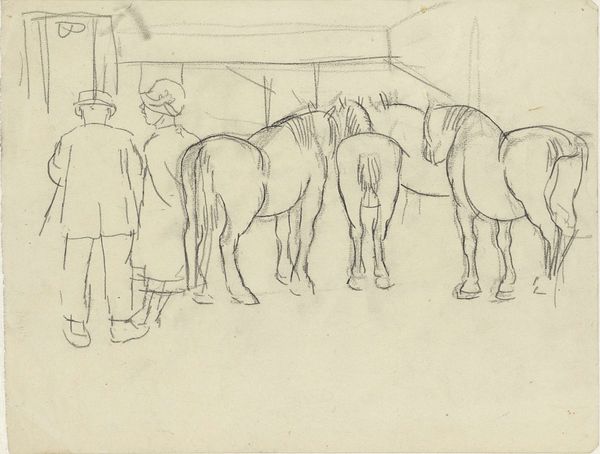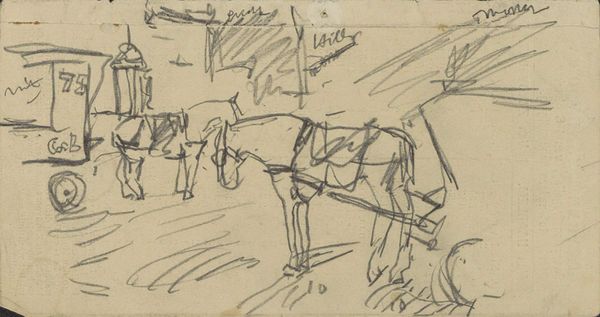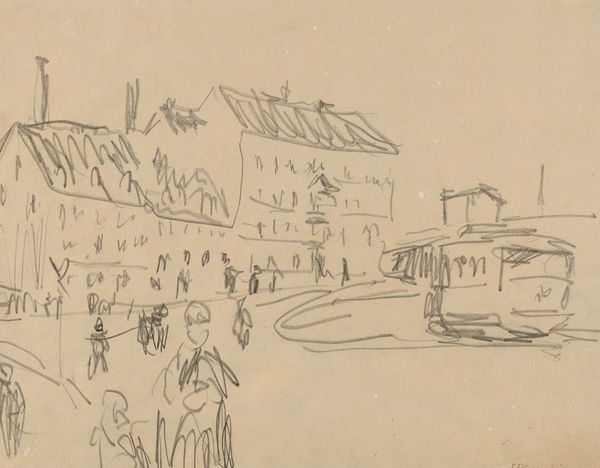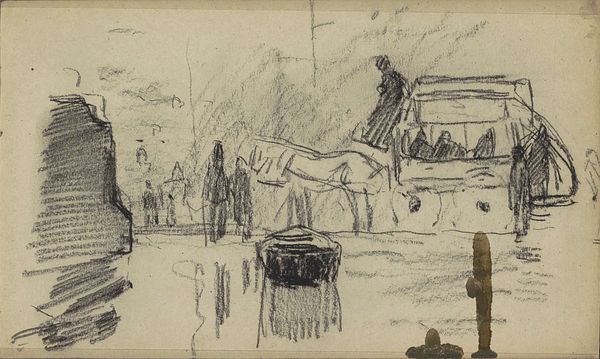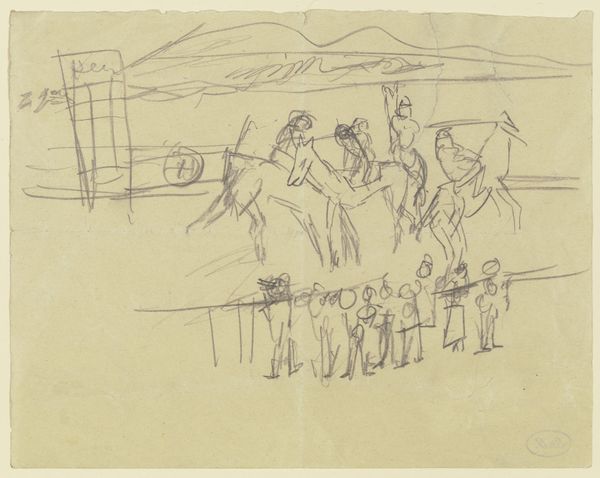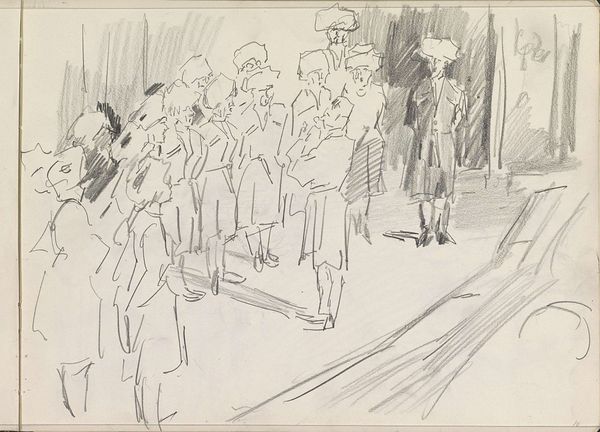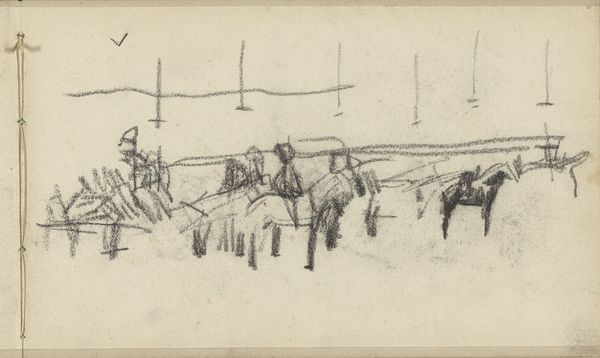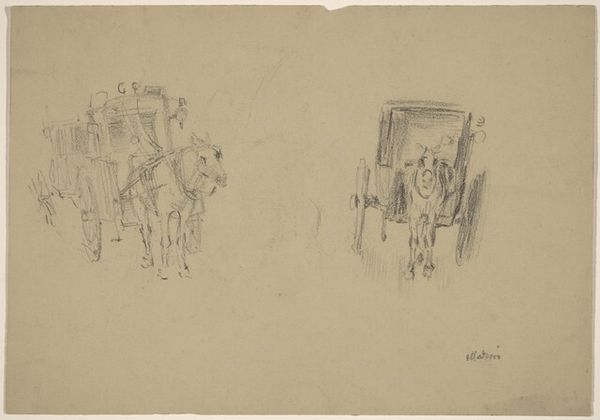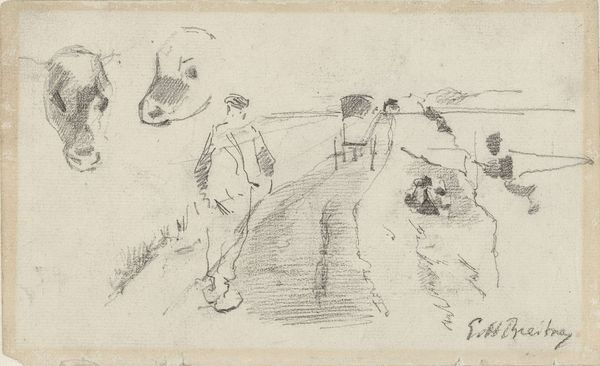
drawing, pencil, graphite
#
drawing
#
landscape
#
figuration
#
pencil
#
horse
#
line
#
graphite
#
genre-painting
Dimensions: height 233 mm, width 308 mm
Copyright: Rijks Museum: Open Domain
Curator: Here at the Rijksmuseum, we have a pencil and graphite drawing by Henk Henriët, titled "Paardenmarkt met diverse figuren," dating from around 1913 to 1945. It depicts, as the name suggests, a horse market filled with various figures. Editor: My immediate reaction is to the bare bones aesthetic; there's a deliberate sketchiness. You can see the marks, the residue of process in plain sight, it's right there on the surface. Raw materials are the core here, not an obscured depiction. Curator: I find the artist's restraint fascinating. It evokes an archetypal marketplace, almost like a memory rather than a direct observation. Consider the horse, a longtime symbol of virility and social power, lined up for inspection. The line work itself communicates how tradition persists through visual media. Editor: True, but what I see isn't virility, but rather labor and capital exchange. Think about the conditions under which this drawing was made, and for what market it was created, even within the timeline it dates between two World Wars and The Great Depression. How accessible was the material used to create art for sale in the public sector? And furthermore, for whose consumption? Curator: An interesting point. However, do the groups of men, huddled in conversation, lack symbolism themselves? Or their almost faceless characterisation; they are meant to represent, for me, how culture can often eclipse individual expression. They stand at a crossroads in tradition, rendered visible on this very parchment. Editor: But what do we know of this paper's make-up? Its watermark, its provenance, or of the means it took to distribute the work once rendered? Line alone may lend itself to symbolism, but as consumers of media, aren’t we ignoring the underlying physical factors here by dismissing the core means by which this image circulated as secondary? Curator: Perhaps we're both correct. Henriët invites us to see the market as both a site of hard exchange and cultural continuity, inextricably bound. Editor: Indeed; seeing the gears as well as the grand design may give one another more texture than observing the other independently.
Comments
No comments
Be the first to comment and join the conversation on the ultimate creative platform.


